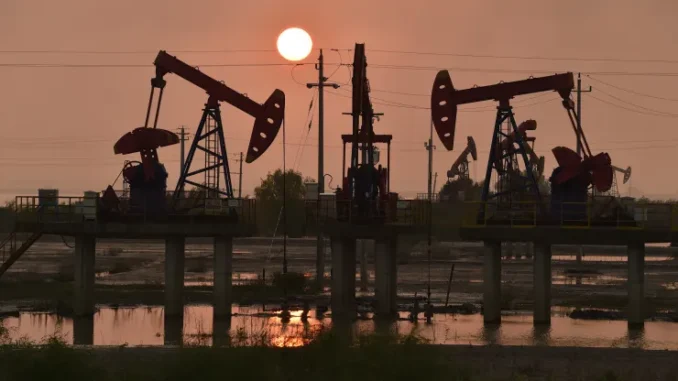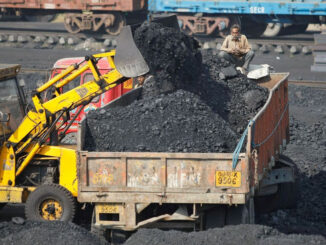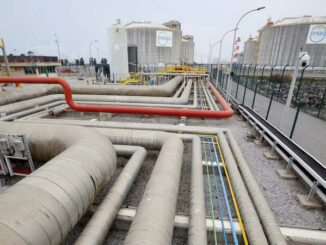
- Oil and gas will remain leading sources of energy for decades to come, major industry players echoed during the inaugural Energy Asia conference.
- “Energy transition is going to take a lot longer, it’s going to cost a lot more money and need new technologies that don’t even exist today,” said Hess Corporation’s CEO.
Oil and gas will continue to be leading sources of energy for decades to come on the back of a lagging energy transition, major industry players said at the Energy Asia conference held in Malaysia’s capital Kuala Lumpur this week.
“We think the biggest realization that should come out of this conference … is oil and gas are needed for decades to come,” said John Hess, CEO of U.S. oil company Hess Corporation.
“Energy transition is going to take a lot longer, it’s going to cost a lot more money and need new technologies that don’t even exist today,” he continued.
When it comes to clean energy, the world needs to invest $4 trillion a year — and it’s nowhere close, Hess said.
According to the International Energy Agency, global investment in clean energy is set to rise to $1.7 trillion in 2023.
The demand projections for [India] are such that we are forced to put up new refineries.A.S. SahneyEXECUTIVE DIRECTOR OF INDIAN OIL CORPORATION
Hess said oil and gas are key to the world’s economic competitiveness, as well as an affordable and secure energy transition.
The oil market will be more constructive in the second half of the year, with production going up to 1.2 million barrels a day in 2027, he predicted. He noted that the biggest challenge the world has is the underinvestment in the industry.
“The world is facing a structural deficit in energy supply, in oil and gas, in clean energy,” he said.
Likewise, at the the conference’s opening address, OPEC’s Secretary General projected global oil demand will rise to 110 million barrels a day by 2045. The growth comes on the back of rapid urbanization over the next few years, Haitham Al Ghais said.

In an e-mail exchange Tuesday, the largest U.S. oil producer ExxonMobil reiterated the same.
The company expects oil to remain the largest primary source of energy for at least two more decades given its vital place in the commercial transportation and chemical industry.
“Liquids are projected to remain the world’s leading energy source in 2050, even as demand growth slows beyond 2025,” Erin McGrath, ExxonMobil’s public and government affairs senior advisor, told CNBC.
“Overall, demand for liquids is expected to rise by about 15 million barrels per day by 2050. Almost all the growth will come from the emerging markets of Asia, Africa, the Middle East and Latin America.”
Main drivers?
Asia will continue to spur the demand for oil and gas, as the region’s growth is set to overtake the U.S. and Europe by the end of the year.
“This is the region where the growth in energy demand will be, and more to come,” S&P Global’s Vice Chairman Dan Yergin said at the energy conference. He said Southeast Asia’s population alone is 50% greater than the European Union’s.
Growth in LNG markets last year were driven by China, India, Korea, Japan and Vietnam, the chairman of French petroleum energy company TotalEnergies said.
“The demand is in Asia. The demand is here, you have 5 billion people moving population, [asking] for a better way of life. And so this is where we must look to the future,” said Patrick Pouyanne, CEO of TotalEnergies.
Brent oil prices since the start of the year
Likewise for oil, one of India’s largest oil companies has increased refining capacities.
“We are probably one of the few companies, one of the few countries who are going to increase refining capacities in the next three to four years by 20%,” said A.S. Sahney from Indian Oil Corporation at a separate panel discussion.
“That shows our belief in [the] continuance of fuel,” the executive director said, acknowledging that energy transition is here to stay.
“But at the same time, the demand projections for the country are such that we are forced to put up new refineries,” he continued.
According to the IEA, India is expected to see the largest increase in energy demand of any country —demand is forecast to rise more than 3% when it becomes the world’s most populous country by 2025.
Saudi Arabia’s state-owned oil giant Aramco is also banking on hopes that China and India will drive oil demand growth of more than 2 million barrels per day, at least for the rest of this year.
Once the broader global economy starts to recover, the industry’s supply demand balances could tighten, said CEO Amin Nasser during his speech at the summit.
Oil demand an ‘ancient story’
Commodities trading firm Vitol is less bullish, predicting that demand for crude will peak in 2030 — two years later than the IEA’s forecast.
“We got it peaking in about 2030 and a gradual decline out to 2040 … And then [a] rapid decline thereafter as the EV fleet and energy transition takes over,” Vitol CEO, Russell Hardy, said during a panel discussion.
While the industry faces good fundamentals in the next few months, Russia’s continued oil production and sputtering Chinese growth complicate forecasts of where prices will go.
“The supply side is slightly overblown, particularly [in] Russia where there were quite a lot of expectations for production loss as a result of the difficulty of getting oil to market because of the sanctions,” Hardy said.
“Because of the global economic malaise at the moment, Chinese recovery is stalling a little bit,” he continued, pointing out that China’s demand for oil has not been as strong as expected.
He observed that Europe and the U.S. have one and a half million barrels a day less demand today compared to 2019 as more consumers are pushed toward renewable sources in Europe and Asia.
“So the demand is an ancient story.”



